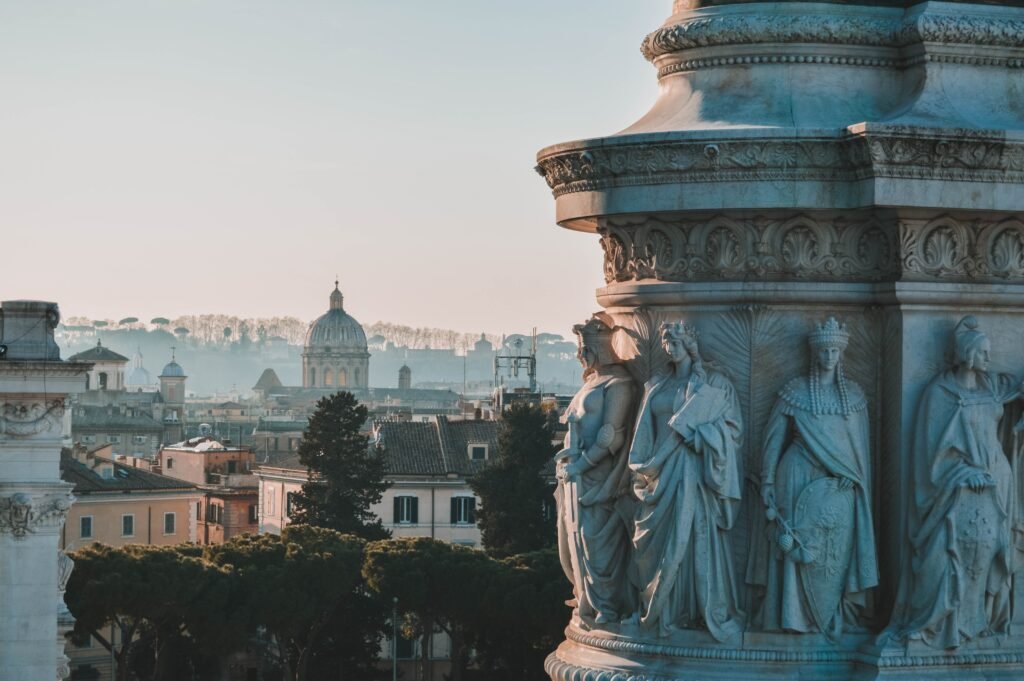It’s not at all hard to make the argument that the Italian capital city of Rome is one giant open-air museum Just about everywhere you go in the city particularly inside the ancient Roman walL you’ll come across archaeological treasures from various eras of the city’s history including the glory days of the Roman Empire the Middle Ages and the Renaissance Plus art is absolutely everywhere in the city Along with the famous museums of Rome and the Vatican that hold some of the undisputed artistic treasures of European civilization you can also find genuine masterpieces in otherwise nondescript churches throughout the city
That makes Rome an absolute dream to visit for lovers of art and history. And exploring the city’s cultural life can begin almost from the moment you touch the platform at Termini Station.
Even the station itself is historic. Named after the nearby Roman baths of the Emperor Diocletian, the station is older than the country of Italy. It’s also surely the only railway station in the world that has an authentic Roman wall inside the building.
Drop off your unneeded bags at a suitcase storage in Termini, and you’ll be able to explore this rich culture for yourself from the moment you step outside the station. Here are some places within walking distance that you should definitely plan to visit:
Table Of Contents
National Museum of Rome – Baths of Diocletian
Termini gets its name from these ancient thermal baths, and this impressive complex is hard to miss. Step out of the front door of Termini station close to the Servian Wall, and you’ll see the huge bath complex rising up in front of you.
The baths themselves were the largest in the Empire when they were built at the tail end of the third century and the beginning of the fourth. Although they fell into disuse after the fall of the Empire, they were preserved during the Renaissance because they were made into a church. Now, the baths are a great place to learn more about what was a hugely important part of Roman culture.
But the baths are more than that They are also the home of the National Museum of Rome a huge museum spread over four different locations including the baths of Diocletian which is probably the greatest museum of Roman history and civilization in the world
The baths display thousands of statues and archaeological relics that trace the long history of Rome from its earliest days as a kingdom through the Republican era and into the Empire, charting the rise and fall that change the course of history in Europe forever. The baths are also notable for Michelangelo’s cloister, a courtyard that was designed by the famous sculptor, painter, and architect during the Renaissance.
Church of Santa Maria della Vittoria

Just a couple minutes’ walk north of the impressive Baths of Diocletian, you’ll find this small church. As a working church, it’s free to go inside, and unless you get unlucky and visit when a tour group is there, you won’t have to line up or brave crowds.
But inside, you’ll find a true artistic treasure Gian Lorenzo Bernini was one of the most famous sculptors of the Baroque era of Italian artA and his incredible work can be seen all over Rome Stil possibly his most famous statue The Ecstasy of St. Teresa is on display in this local church
This groundbreaking statue brought a new sensuality to religious art, and it remains as hauntingly beautiful today as it was when it was first carved in 1652. This would be the pride of the collection of just about any museum in the world, but it’s one of the quirks of Rome that, instead, it still occupies the church that it was initially made for.
Museo Universale
This Universal Museum would be the pride of most cities, but in Rome, it flies a little under the radar just because there are so many incredible art museums in the city. This is another one featuring Renaissance art by the likes of Raphael, Correggio, and Tintoretto, along with sculptures by Canova.
The collection also features ancient Roman sculpture and provides a crash course in the last 2000 years or so of history. Just a short walk from Termini Station, it’s a great place to get a taste of what you can expect from Rome’s many incredible art museums.
Museo di Storia della Medicina

For something a little different head to this medical museum located on the campus of the Sapienza University of Rome which has been operating in the city since 1303 While most of Romes tourist attractions lie to the south and west of Termini you can get to the University by taking a short walk north and in doing so Escape many of the tourist crowds
This intriguing museum explores the history of medicine and treatment from pre Roman times up to the 20th century The occasionally gruesome exhibits of medical equipment will if nothing else make you grateful to live in the time you do
Area Archeologica di San Vito
In a city like Rome, you can barely stick a shovel in the ground without coming across some archaeological relics. Not far from Termini Station, the San Vito Archaeological Area lies underneath the church of the same name and preserves an earlier version of the church, along with a Roman road and aqueduct that once stood in this part of the city.
Although not as grand as many of Rome’s other archaeological remains, this site is uncrowded, cheap to enter, and close to the station, and in many ways, it provides a more immediate sense of the daily life of 2000 years ago without the tourist crowds.
Art and history near Termini Station

No matter where you are in Rome the fascinating history and culture of the city is never far away Leave your bags behind at a Termini Luggage storage and check out some of these incredible museums to get a sense of the unrivaled history of the Italian capital